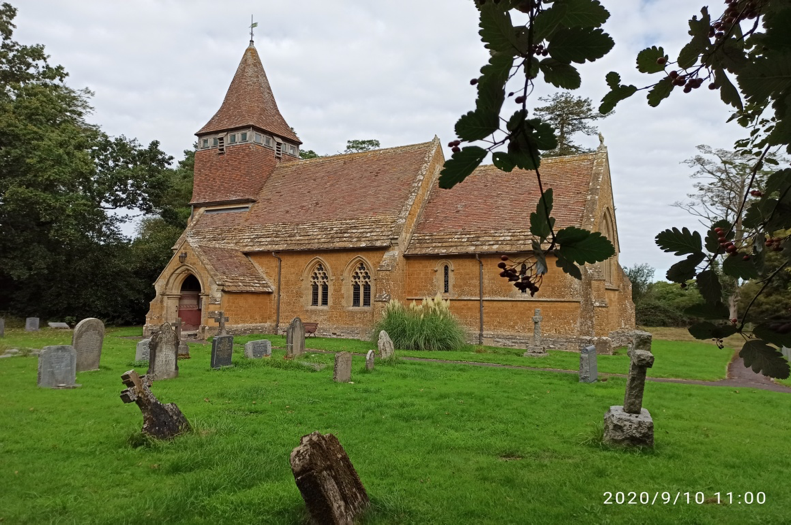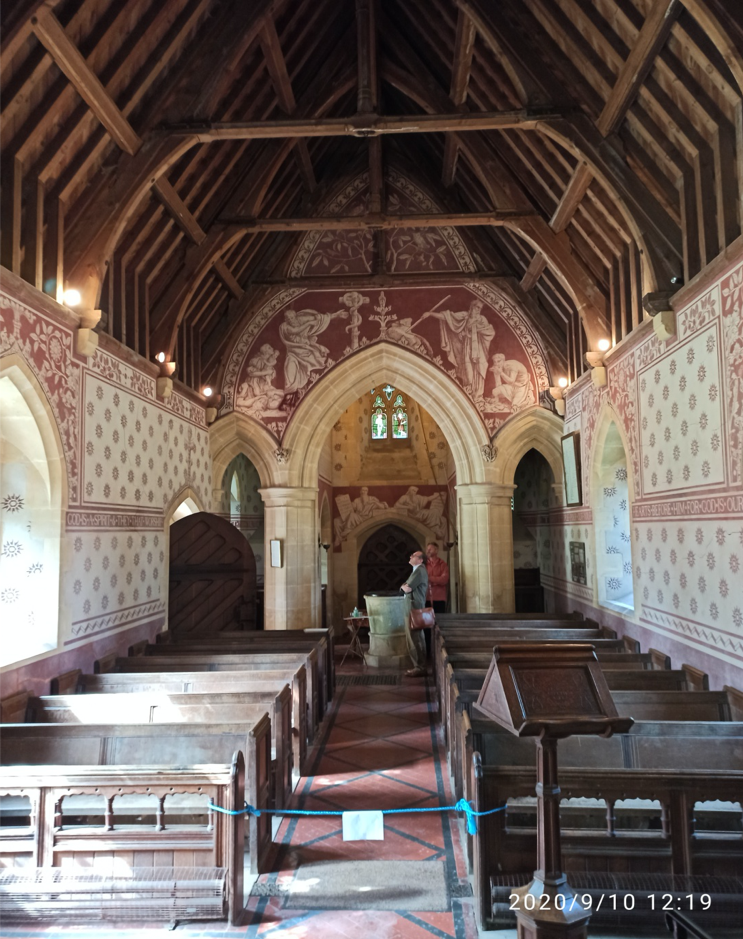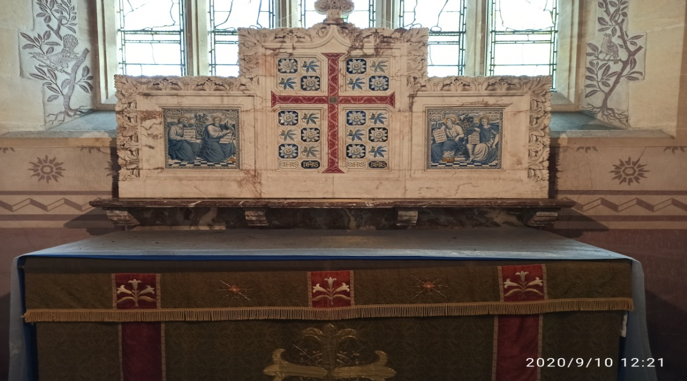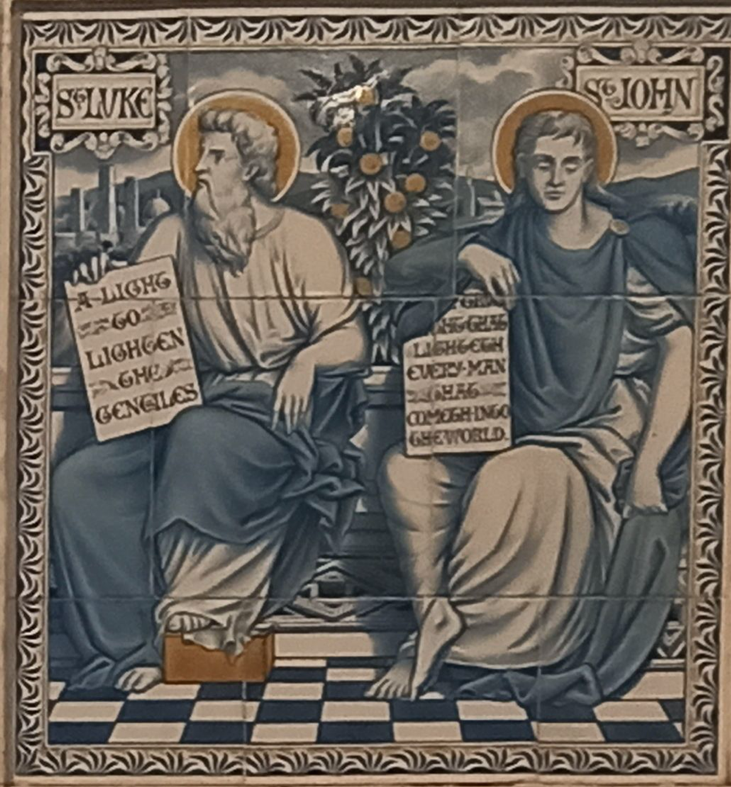‘A REALLY IMPORTANT LITTLE CHURCH’ Nikolaus Pevsner in ‘The Buildings of England’
As well as designing stained glass for churches, some of De Morgan’s earliest tile commissions were for churches. Rob Hutchings from Somerset Archaeological and Natural History Society tells us all about it for this week’s #TilesOnTuesday.
A chance remark by Julian Orbach at a lecture on William De Morgan in 2020 alerted us to this church. Commenting on the Colthurst bequest of De Morgan pottery to the Somerset Archeological and Natural History Society (SANHS), Julian remarked on the lack of a Somerset connection between the famous ceramicist and our county, with this church as a rare exception.
St. Peter’s Hornblotton lies half-hidden some distance from the village, 8 miles east of Somerton. Visitors approach along a tree lined avenue; for a moment, they are taken aback by a tile-hung stumpy spire more at home in Sussex or Surrey than deepest Somerset. The design by Sir Thomas Jackson speaks clearly of Arts and Crafts: no hint of grandeur, local materials allied with sophisticated craftsmanship: the result is a Victorian realisation of the Decorated style of the early fourteenth century. That short spire and broken roof line of nave and chancel allows the church to settle down in a landscape which it does not dominate.

Jackson was employed by the wealthy Thring family to replace the ancient St. Peter’s, whose ruined tower is found to the south. Through the trees to the west lies the former rectory, four times as large as the church itself. This was the home of Reverend Godfrey Thring. In 1883 the Shepton Mallet Journal described the installation of an electric turret clock in his church, ‘the first in the kingdom’. The striking mechanism was fitted in the spire while the ‘pendulum with batteries that give motion to the works’ was installed 130 yards away in the rectory. The clock now sits in the Science Museum, London. The weather vane atop the spire announces 1873 as the completion date of the building itself.

Once inside, we begin to realise the truth of Pevsner’s description. The walls of St. Peter’s are rare examples of ‘sgraffito’, a technique more often found on small pots than interior surfaces. An under-layer in this case of strawberry red plaster is exposed by incising through the light colour applied on top. The balance of the two colours can be adjusted to great effect: compare the side walls of the nave with the images of the figures above the triple arch below the spire. Clearly the church is the product of a single guiding hand, not a slow accretion by many. The effect of the sgraffito, especially the frieze motif, is to pull together and lead the eye to individual features, in our case the altar and reredos containing tiles by William De Morgan, which brought us here in the first place.

In the 1870s De Morgan produced more than 300 tile designs while working in Chelsea. At Hornblotton there is no sign of the ‘orientalising’ which absorbed him in the latter half of the decade, leading to an exuberant use of colour and line. Perhaps Reverend Thring insisted he keep to a more subdued design. Close up, the images of the Four Evangelists seem restrained, splashes of gold colour almost lost in an overall blue-white. The red porcelain cross dividing the figures appears to have a peculiar lustre; was this a hint of things to come in De Morgan’s career, when he experimented with this forgotten art of ceramics – ‘forgotten’ perhaps in Europe, but not in the Near East. SANHS Library holds books and images related to De Morgan, available to view at the Somerset Heritage Centre, Taunton.

We visited St. Peter’s Hornblotton by kind permission of the Vicar and Churchwarden. Contact : 01963 441604.
This gem of a church is normally open every Tuesday and Saturday for private prayer. Visitors are welcome. It is worth the trip!





